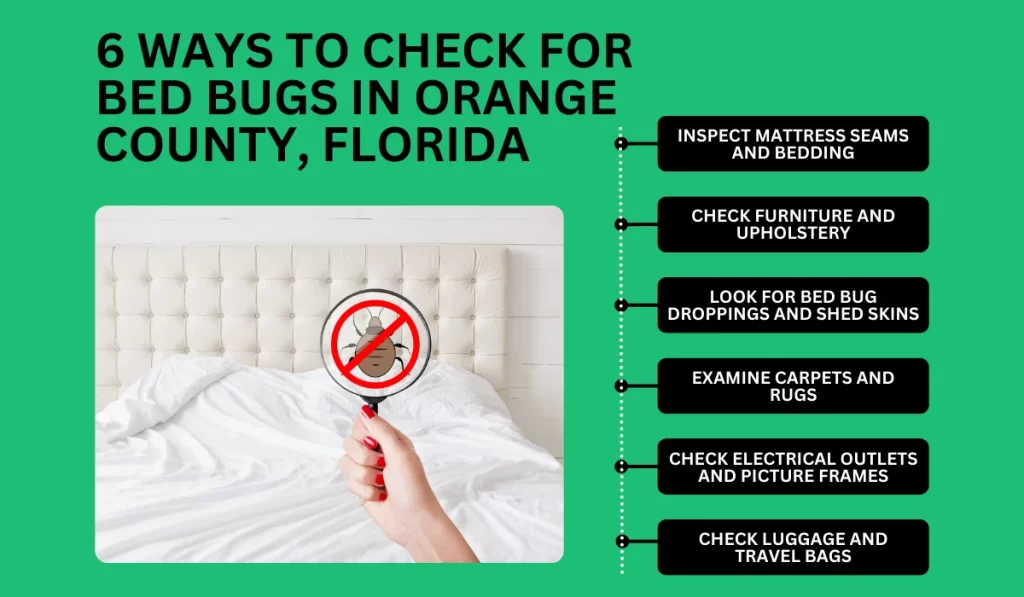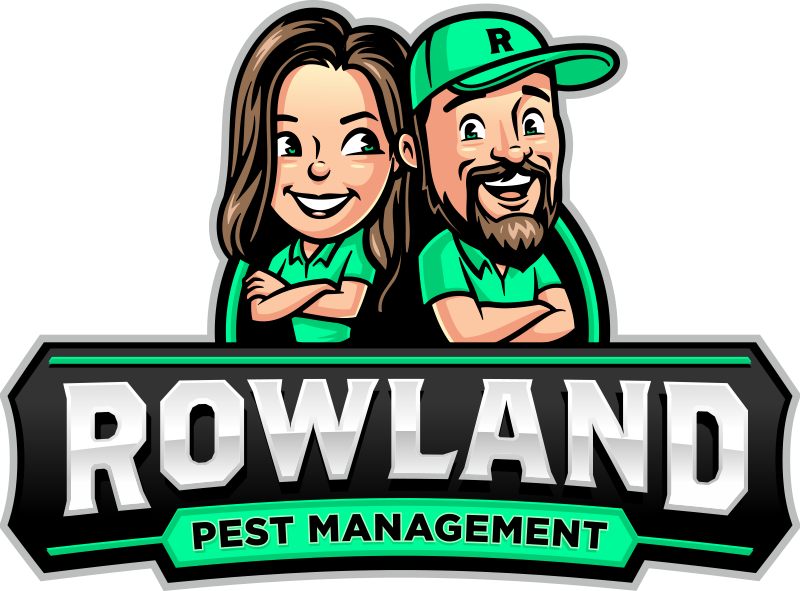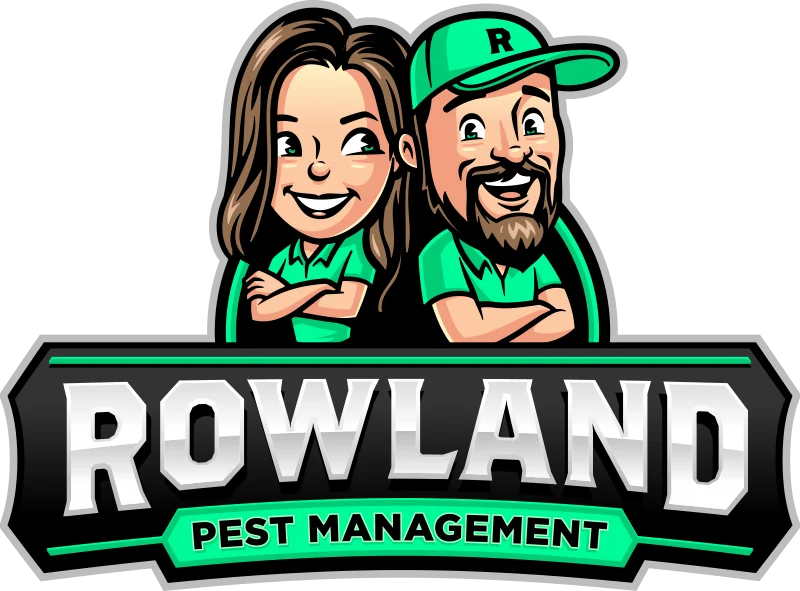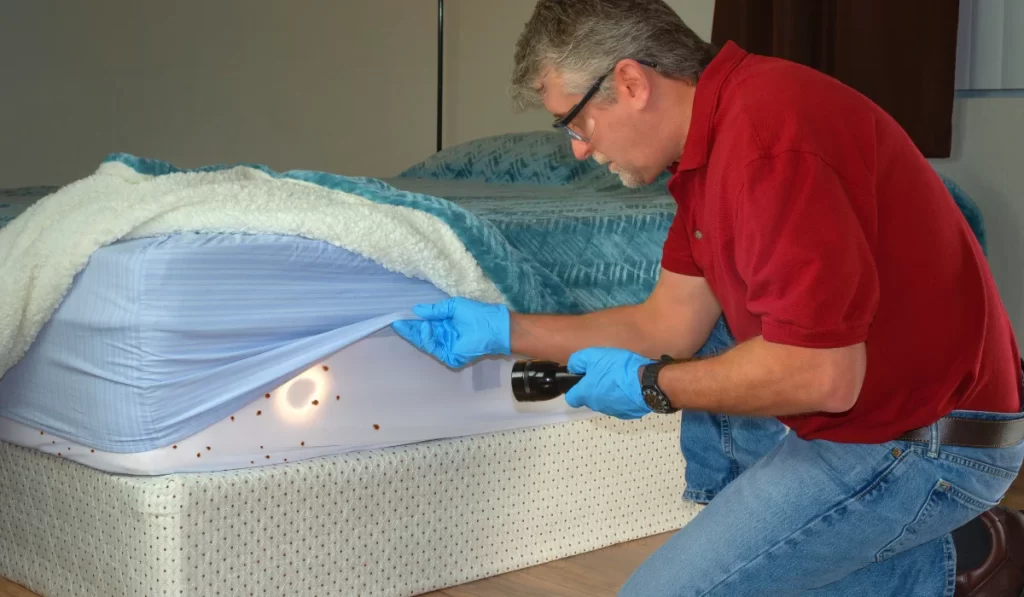Bed bugs can be a nightmare for anyone who’s ever had to deal with them. Knowing how to check for bed bugs is essential to prevent an infestation from spreading.
What are the telltale signs of bed bugs, and where should you look for them? Read on to learn how to spot these unwanted guests and protect your home.
Key Takeaways
- Bed bugs commonly hide in mattresses, furniture, carpets, and even electrical outlets, so inspecting these areas thoroughly is important.
- Signs of bed bugs include live bugs, shed skins, droppings, blood stains, and a musty odor.
- Bed bugs can travel into your home through luggage, so always inspect and wash travel bags after a trip.
- If you find bed bugs, act quickly by isolating infested items, cleaning affected areas, and contacting pest control professionals.

Step 1: Inspect Mattress Seams and Bedding
Bed bugs commonly hide in mattresses and bedding, especially around the seams. Key places to check include the bed frame, mattress seams, box springs, and headboard.
Look for oval-shaped, reddish-brown live bed bugs. Also, look for blood stains, dark spots (bed bug excrement), and tiny eggshells.
Use a flashlight to get into those hard-to-see areas. To the naked eye, they are about the size of an apple seed, so ensure you cover every inch.
Step 2: Check Furniture and Upholstery
Upholstered furniture, such as dressers, couches, and recliners, can also be prime locations for bed bugs. As they advance through their life cycle, bed bugs molt, leaving behind their exoskeletons in these areas.
Use a flashlight and a credit card to check tight spaces where bed bugs might be hiding. Look for shed skins, black or dark brown spots, and occasionally a musty odor.
Step 3: Look for Bed Bug Droppings and Shed Skins
Droppings and shed skins are clear indicators of bed bug activity. These signs can be found throughout your home. Look for the following signs on linens, mattress seams, and furniture crevices:
- Black spots that suggest droppings or feces from digested blood meals
- Shed skins come from the growing process of nymphs
- Blood spots come from crushed adult bed bugs
Step 4: Examine Carpets and Rugs
Bed bugs can also hide in carpets and rugs. Remember to inspect along baseboards, under furniture, and along the edges.
Use a vacuum to clean the suspected areas thoroughly and inspect the collected debris. Be aware that carpet beetles can sometimes be misidentified as bed bugs.
Step 5: Check Electrical Outlets and Picture Frames
Surprisingly, bed bugs can hide in electrical outlets and behind picture frames. Although less common, these areas can offer small, dark hiding places where bed bug eggs are protected, especially if other hiding spots are overcrowded.
Steps to inspect these areas:
- Remove covers from outlets and light switches
- Check behind picture frames and loose wallpaper
- Look in cracks and crevices around these areas
Step 6: Check Luggage and Travel Bags
Bed bugs frequently find their way into your home from your hotel room by hitching a ride in your luggage and travel bags. If possible, it’s best to unpack your bags outside right after you’ve been on a trip.
As you do so, use a flashlight to inspect the inside seams and folds carefully. Once you’ve finished, wash all laundry from your trip in hot water to remove any lingering bed bugs.
What to Do if You Find Bed Bugs in Your Home
The first steps in bed bug control are crucial in managing their spread. Bed bug bites can cause welts and, in some cases, lead to allergic reactions. This makes prompt action even more important.
Here are the immediate steps to take to get rid of them:
- Isolation of Infested Items: Seal affected bedding and clothing in plastic bags. Avoid moving items between rooms to contain the spread.
- Inspection and Cleaning: Thoroughly vacuum affected areas. Wash bed sheets and clothing at high temperatures.
- Reduce Clutter: Clear out unnecessary items to remove hiding spots and deter other pests, such as cockroaches, fleas, and ants.
- Contact Professionals: Reach out to pest control experts for a detailed assessment.
Professional Bed Bug Treatment
Dealing with bed bugs? At Rowland Pest Management, we understand that every home is unique. Our bed bug treatments are customized to your needs, ensuring not only a thorough extermination but also long-term peace of mind.
From detailed inspections to tailored solutions, we’re with you every step of the way. Contact us today, and let us help you reclaim your home.


